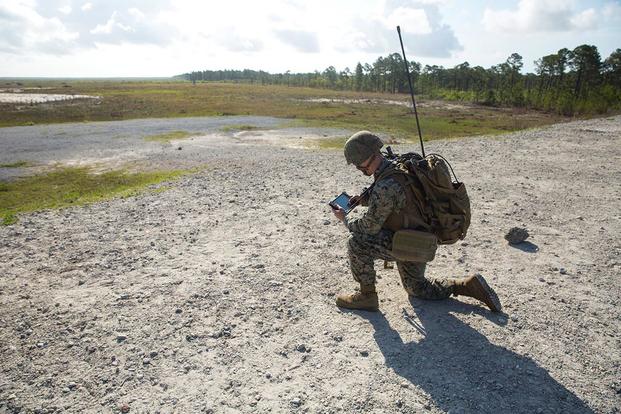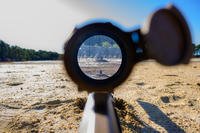Marines in fire-support units can now coordinate artillery, mortar and naval gunfire from a handy, ruggedized tablet.
The Target Handoff System version 2.0 (THSv2) allows Marines to quickly establish GPS coordinates for accurate call for fire missions. Marines are scheduled to demonstrate how the device can connect with many of the Corps' communication systems during Island Marauder 2019 in late September, according to a news release from Marine Corps Systems Command.
"It is a modular equipment suite that provides the warfighter with the capability to quickly and accurately identify and locate targets and transmit that information digitally to fire support systems or weapons platforms," Jeff Nebel, Fire Support Coordination team lead at SYSCOM, said in the release.
The Marine Corps has begun making tactical tablets a regular part of Marine kit, such as the Marine Air-Ground Task Force Common Handheld (MCH), a system that helps small-unit leaders navigate and disseminate orders, graphics and digital data pertaining to a mission.
Related: This Tactical Tablet Will Help Marines Cut Through Fog of War
But the MCH is primarily used for situational awareness on the battlefield, while the THSv2 feeds information to the Advanced Field Artillery Tactical Data System and other fire-support and weapons platforms, the release states.
The Marine Corps began issuing the call for fire tablet in fiscal 2018 but have been working on the effort since 2016. It allows Marine Air-Ground Task Force units to view an updated satellite image of a location's topography, according to the release.
It also "decreases the probability of incorrect data transfer of the initial fire request by providing a digital communication link between the observer and fires platform," Nebel said in the release.
Since its fielding, the THSv2 has been popular with Marines who have used it during live-fire events and other training, Marine officials said, adding that annual hardware and software updates will offer increased capability.
"The system is robust enough to be expanded upon," William Bensch, an analyst for THSv2, said in the release. "We're looking to provide the warfighter with the best equipment to engage the enemy faster and more efficiently, and THSv2 does that."
-- Matthew Cox can be reached at matthew.cox@military.com.
Read more: Navy 3-Star Says Rust on Ships Is Not Driving Up Maintenance Costs













